Serving 588 students in grades Prekindergarten-5, Scurlock Elementary School ranks in the bottom 50% of all schools in North Carolina for overall test scores (math proficiency is bottom 50%, and reading proficiency is bottom 50%).
The percentage of students achieving proficiency in math is 42% (which is lower than the North Carolina state average of 51%). The percentage of students achieving proficiency in reading/language arts is 37% (which is lower than the North Carolina state average of 50%).
The student:teacher ratio of 14:1 is lower than the North Carolina state level of 15:1.
Minority enrollment is 86% of the student body (majority Black and Hispanic), which is higher than the North Carolina state average of 57% (majority Black and Hispanic).
Quick Stats (2025)
- School Type: Online School
- Grades: Prekindergarten-5
- Enrollment: 588 students
- State Accredited: No
- Live Instruction: No
- Rolling Enrollment: No
- Student:Teacher Ratio: 14:1
- Minority Enrollment: 86%
- Overall Testing Rank: Bottom 50% in NC
- Math Proficiency: 42% (Btm 50%)
- Reading Proficiency: 37% (Btm 50%)
- Science Proficiency: 70-74% (Top 30%)
- Source: National Center for Education Statistics (NCES), NC Dept. of Education
Top Rankings
Scurlock Elementary School ranks among the top 20% of public schools in North Carolina for:
Category
Attribute
Diversity
Percent Eligible For Free Lunch
Student Attention
School Overview
Scurlock Elementary School's student population of 588 students has declined by 11% over five school years.
The teacher population of 41 teachers has stayed relatively flat over five school years.
School Type
Grades Offered
Grades Prekindergarten-5
(offers virtual instruction)
(offers virtual instruction)
Total Students
588 students
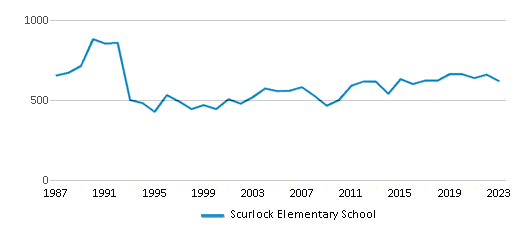
Gender %
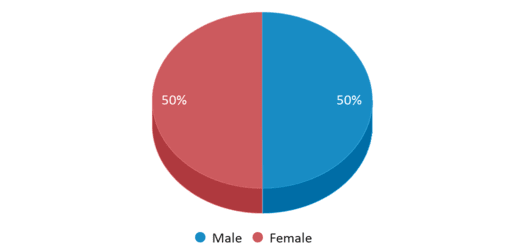
Total Classroom Teachers
41 teachers
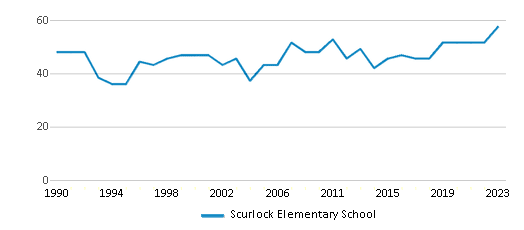
Students by Grade
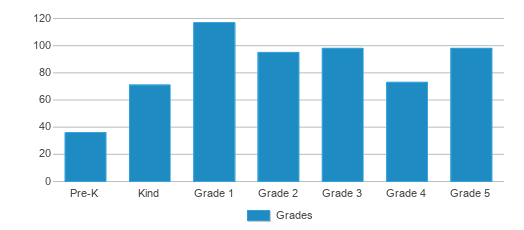
State Accredited Program
No
Personalized Content
No
Live Instruction
No
Rolling Enrollment
No
Flexible Class Schedule
No
Accelerated Offerings
No
Classes for Credit/Part Time Options
No
Dedicated College Counselor
No
Tutoring/Mentoring
No
Community Clubs/Activities Offered
No
School Rankings
Scurlock Elementary School ranks within the bottom 50% of all 2,617 schools in North Carolina (based off of combined math and reading proficiency testing data).
The diversity score of Scurlock Elementary School is 0.72, which is more than the diversity score at state average of 0.71. The school's diversity has stayed relatively flat over five school years.
Overall Testing Rank
#1790 out of 2617 schools
(Bottom 50%)
(Bottom 50%)
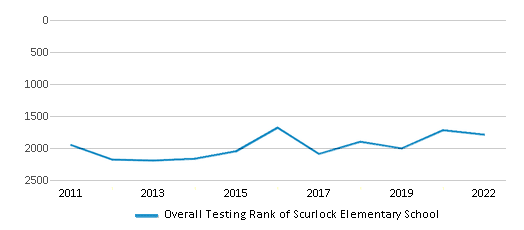
Math Test Scores (% Proficient)
42%
51%
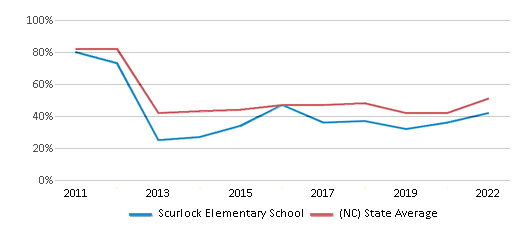
Reading/Language Arts Test Scores (% Proficient)
37%
50%
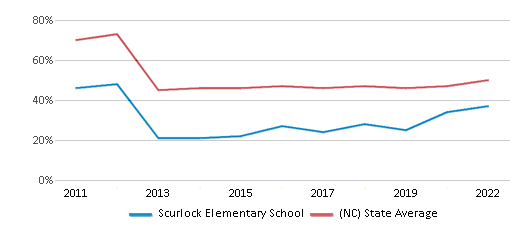
Science Test Scores (% Proficient)
70-74%
63%
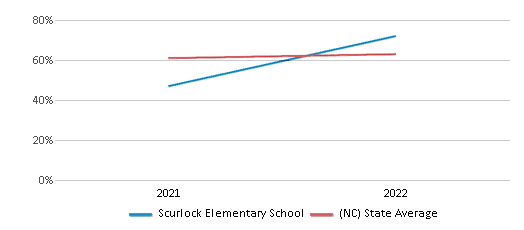
Student : Teacher Ratio
14:1
15:1
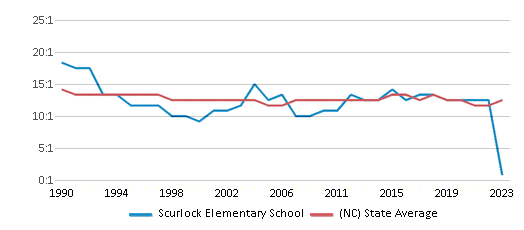
American Indian
3%
1%
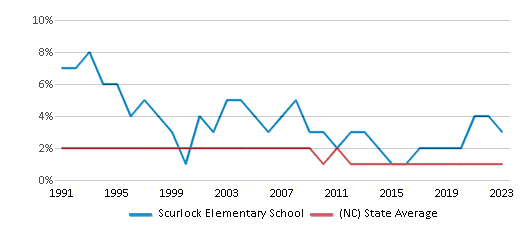
Asian
1%
4%
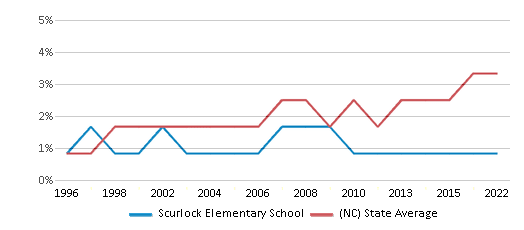
Hispanic
34%
21%
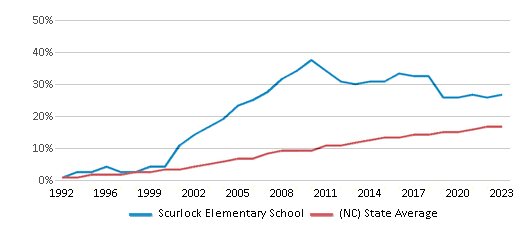
Black
37%
25%

White
14%
43%
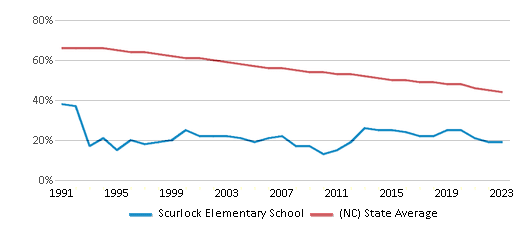
Hawaiian
1%
n/a
Two or more races
10%
6%
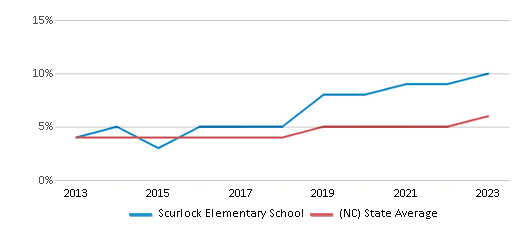
All Ethnic Groups
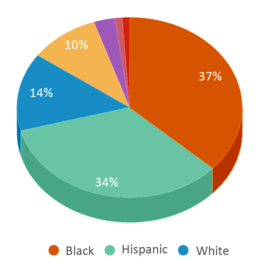
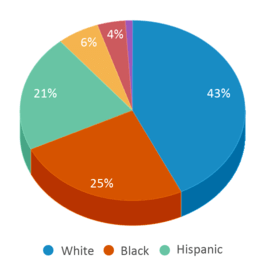
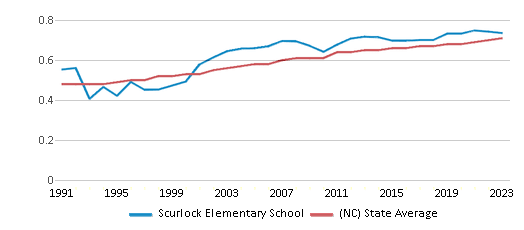
Participates in the National School Lunch Program (NSLP)
Yes
Eligible for Free Lunch
99%
68%
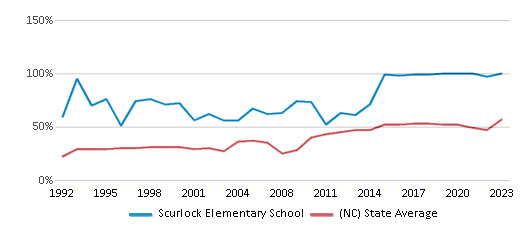
Eligible for Reduced Lunch (13-14)
9%
7%
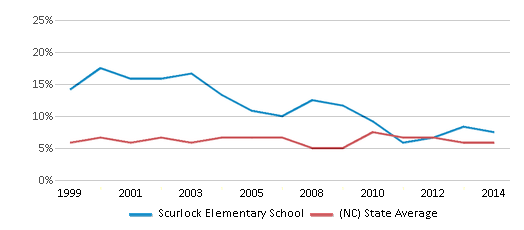
School Statewide Testing
School District Name
Source: National Center for Education Statistics (NCES), NC Dept. of Education
Profile last updated: 02/09/2025
Frequently Asked Questions
What is Scurlock Elementary School's ranking?
Scurlock Elementary School is ranked #1790 out of 2,617 schools, which ranks it among the bottom 50% of public schools in North Carolina.
What schools are Scurlock Elementary School often compared to?
Scurlock Elementary Schoolis often viewed alongside schools like Rockfish Hoke Elementary School, Don D Steed Elementary School by visitors of our site.
What percent of students have achieved state testing proficiency in math and reading?
42% of students have achieved math proficiency (compared to the 51% NC state average), while 37% of students have achieved reading proficiency (compared to the 50% NC state average).
How many students attend Scurlock Elementary School?
588 students attend Scurlock Elementary School.
What is the racial composition of the student body?
37% of Scurlock Elementary School students are Black, 34% of students are Hispanic, 14% of students are White, 10% of students are Two or more races, 3% of students are American Indian, 1% of students are Asian, and 1% of students are Hawaiian.
What is the student:teacher ratio of Scurlock Elementary School?
Scurlock Elementary School has a student ration of 14:1, which is lower than the North Carolina state average of 15:1.
What grades does Scurlock Elementary School offer ?
Scurlock Elementary School offers enrollment in grades Prekindergarten-5 (offers virtual instruction).
What school district is Scurlock Elementary School part of?
Scurlock Elementary School is part of Hoke County Schools School District.
School Reviews
5 2/10/2020
We have been with this school since Kindergarten. We LOVE it! The teachers do so much more at this school for the children than at the schools in the district that are labeled as the top schools here. Those schools get most of the funding and have more money to put into their equipment and classrooms. But this money can't buy dedicated teachers that do their best for each child. You will find these teachers at Scurlock. While we hear from those schools about drama in their classes with the parents, with the teachers, here there is barely ever drama. One reason why some scores are lower than others is because there is a lot of diversity and there are students that just started learning the English language. These are welcomed with open arms and of what I have seen got a lot of help to get adjusted and they picked up quickly. Thank You Scurlock Staff for all the great work you are doing. Keep it up!
5 1/20/2020
I love this school it is so fun this school teaches me something that the other school does.
Review Scurlock Elementary School. Reviews should be a few sentences in length. Please include any comments on:
- Quality of academic programs, teachers, and facilities
- Availability of music, art, sports and other extracurricular activities
Recent Articles

What Is A Charter School?
Explore the world of charter schools in this comprehensive guide. Learn about their history, how they operate, and the pros and cons of this educational innovation. Discover key facts about charter schools, including admission policies, demographics, and funding, as well as what to look for when considering a charter school for your child.

10 Reasons Why High School Sports Benefit Students
Discover the 10 compelling reasons why high school sports are beneficial for students. This comprehensive article explores how athletics enhance academic performance, foster personal growth, and develop crucial life skills. From improved fitness and time management to leadership development and community representation, learn why participating in high school sports can be a game-changer for students' overall success and well-being.

February 05, 2025
Understanding the U.S. Department of Education: Structure, Impact, and EvolutionWe explore how the Department of Education shapes American education, from its cabinet-level leadership to its impact on millions of students, written for general audiences seeking clarity on this vital institution.






